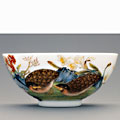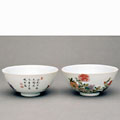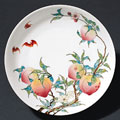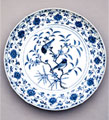 |
|
 |
 |
 |
 |
 |
 |
 |
 |
Qing Dynasty Porcelain
During the 18th century, the Chinese ceramics industry, which was once again under stringent imperial control, was noted for the perfection of its porcelain bodies and for the development of new techniques for their decoration. From 1644 to 1912, China was under the control of the Manchus, a people of northeastern Central Asian origins, who had conquered the Han-Chinese Ming empire. Known as the Qing dynasty, the period of Manchu rule was one of relative peace and economic prosperity. It was also a time of close ties with Europe: Chinese porcelains were traded in increasing numbers to different nations in Europe, helping to spur changes in the ceramic industry in the West. The Qing rulers were avid patrons of the arts, which flourished in many forms during their reign. In 1677, the Kangxi emperor (reigned 1662-1722) rebuilt the imperial kilns and factories at Jingdezhen, which had been destroyed during the fighting that had led to the establishment of the dynasty, and in 1683 the production of imperial ceramics was resumed. The creation of a range of opaque overglaze enamel colors was one of the most important contributions made to ceramic technology during the Qing era. Previously, the enamels used to paint ceramics had been transparent and of limited hues. With the advent of opaque colors, painters could blend tints together to create varied gradations of shades and hues. Development of these enamels began during the reign of the Kangxi emperor and continued into that of the Yongzheng emperor (1737-1795). The colors developed in the early part of the Qing period were used throughout the dynasty and continue to be used today in the decoration of porcelains. |
 |
 |
| 1 thru 5 of 5 |
 |
| view text only list |
 |

Bowl |
 |

Pair of Bowls |
 |

Dish |
 |

Bottle |
 |

Platter |
 |
|
 |